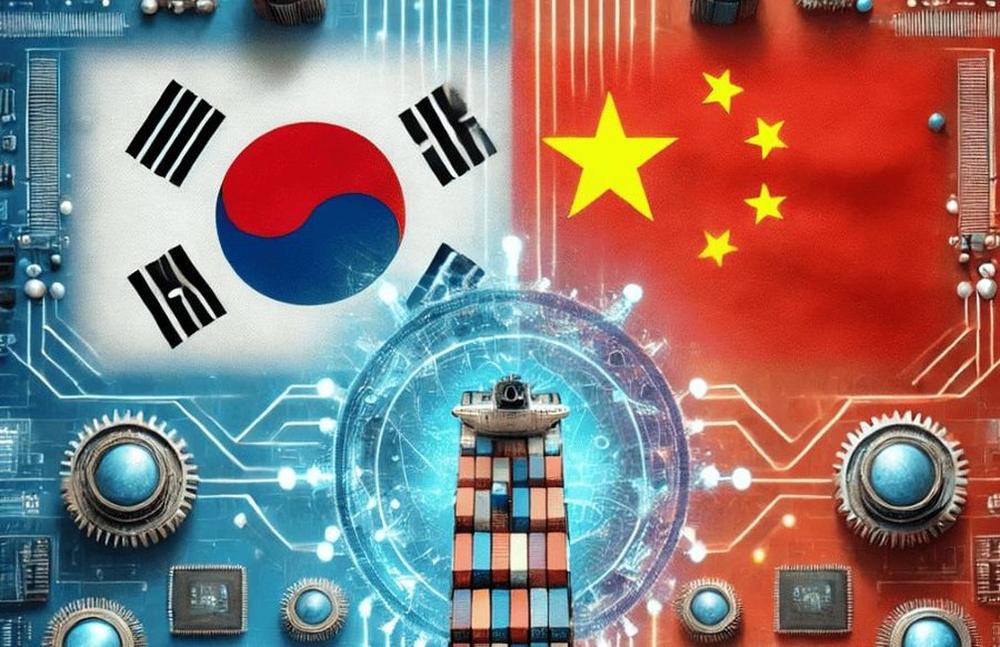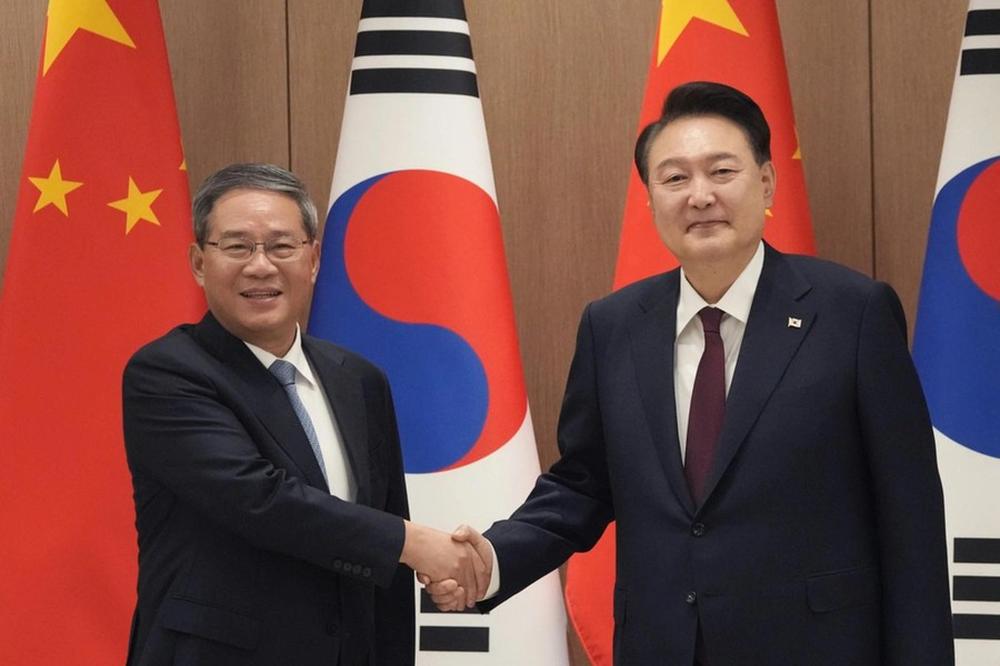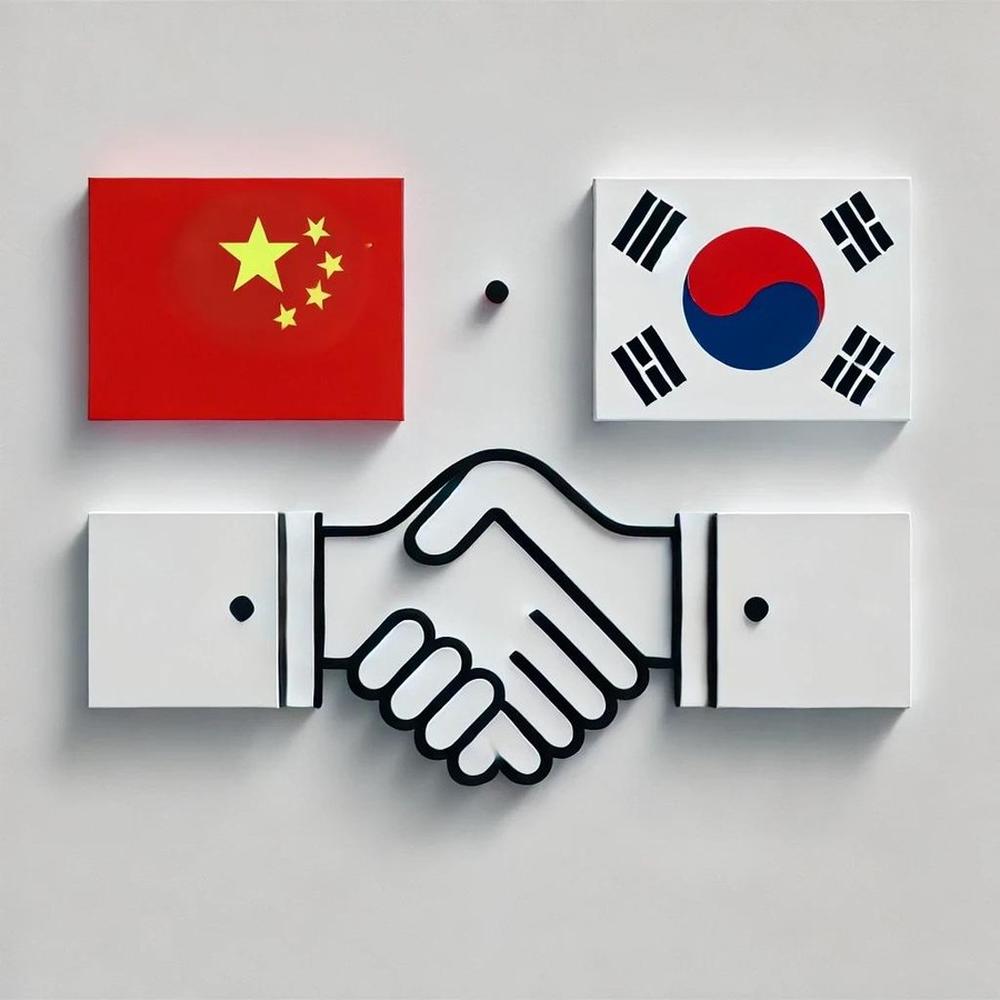- #China
- #Global Issues
- #South Korea
- #US Foreign Policy
► Although high-level exchanges between South Korea and China have recently increased, China's policy toward South Korea remains fundamentally one of 'amicable management.'
► In the short term, bilateral relations will be heavily influenced by the outcome of the ROK-China summit, which will take place around the 2025 APEC summit in Gyeongju.
►The future development of ROK-PRC relations will depend on the flexible balance between the firmness of the ROK-U.S. alliance and strategic autonomy in South Korea's foreign policy.
Since the diplomatic normalization between South Korea (Republic of Korea, ROK) and China (People's Republic of China, PRC) in August 1992, their relationship has gone through three distinct phases: 1) development, 2) adjustment, and 3) conflict—particularly following the issue of the THAAD (Terminal High Altitude Area Defense) deployment in South Korea in July 2016. The bilateral relationship has now entered a fourth phase: 4) reestablishment.
After the establishment of diplomatic ties, ROK-China relations primarily advanced in the economic and trade sectors. However, in the 2000s, trade frictions and historical disputes, including China's "Northeast Project," emerged, marking the adjustment phase. Two key factors distinguish the adjustment period from the post-2016 conflict phase.
First, during the adjustment phase, even when issues arose, both countries made significant efforts to resolve them through mutual agreement. In contrast, during the conflict phase, the intensification of U.S.-China strategic competition led to multilateral issues that could not be addressed through bilateral ROK-China discussions alone.
Second, during the adjustment phase, both South Korea and China worked to maintain a positive developmental trend. However, in the conflict phase, clashes of national interests led to a frozen relationship, with neither side retreating from its position. Recently, both countries have recognized that the ongoing conflict benefits neither side, prompting increased high-level dialogues to reestablish a more stable relationship.
1. Structural Challenges in ROK-PRC Relations and the Second Trump Administration
Recent challenges in ROK-China relations are influenced not only by bilateral issues but also by international and multilateral factors. Specifically, as U.S.-China strategic competition intensifies, the Yoon Suk-yeol administration has strengthened the ROK-U.S. alliance and enhanced ROK-U.S.-Japan cooperation to bolster deterrence against North Korea’s nuclear and missile threats. However, this has led to an increase in structural challenges across various sectors of the ROK-China relationship. This trend is expected to continue during the second term of President Trump.
(a) Political Sector
In the political sphere, challenges related to values and political systems have become more prominent in ROK-China relations. While clear differences in values and political systems existed when diplomatic ties were first established in 1992, these differences did not pose significant challenges at that time. However, as U.S.-China strategic competition deepened, issues related to human rights, democracy, and political systems gradually emerged as new challenges. The friction between the U.S. and China over universal values—particularly within the context of strategic competition—highlighted the differences between South Korea and China, differences that had previously not been an issue.
These political challenges are expected to persist for the time being. Since President Yoon’s inauguration, South Korea has clearly articulated its diplomatic vision of becoming a “global pivot state,” contributing to freedom, peace, and prosperity while actively engaging with global issues. This includes taking a firm stance on issues such as the Ukraine-Russia war, the South China Sea, and the Taiwan Strait. However, China perceives South Korea’s stance on the Taiwan Strait as interference in its internal affairs, highlighting the differences between the two countries on this issue.
The second Trump administration is likely to prioritize "pragmatism" over "values." However, President Trump may utilize the differences in values and political systems as bargaining chips, meaning these issues will remain a challenge in the political relationship between South Korea and China.
(b) Economic and Trade Sector
In the economic and trade sector, changes in China’s industrial structure and the intensification of U.S.-China strategic competition have reduced the space for ROK-China economic cooperation and increased challenges. A key factor in this shift has been the development of China’s economy and its evolving industrial structure. This transition has transformed the ROK-China economic and trade relationship from one of "mutual complementarity and cooperation" to one of "competition," particularly in sectors where China has enhanced its technological capabilities, production capacity, and labor wages, disrupting the previous division of labor between the two nations.
Additionally, under the context of U.S.-China strategic competition, there is less room for cooperation in high-tech industries between Seoul and Beijing. The U.S. has consistently tightened export controls on China’s semiconductor industry, restricting the export of South Korean semiconductor products to China. South Korean companies, such as Samsung Electronics and SK Hynix, have also faced difficulties in upgrading their production facilities in China.
This trend is expected to intensify under the second Trump administration, further complicating challenges in the ROK-China economic and trade sector as well as making it increasingly difficult to create space for bilateral economic cooperation.
(c) Military and Security Sector
As a divided country constantly facing nuclear and missile threats from North Korea, South Korea has sought to strengthen its alliance with the U.S. and expand cooperation with China to address these threats. Since President Yoon’s inauguration, South Korea has focused on reinforcing the ROK-U.S. alliance and ROK-U.S.-Japan cooperation to enhance deterrence against North Korea, while also seeking China’s constructive role in denuclearizing the Korean Peninsula and stabilizing the region.
However, China has criticized the strengthening of the ROK-U.S. and U.S.-Japan alliances, as well as trilateral cooperation, viewing them as escalations of military and security tensions in Northeast Asia. In the context of U.S.-China strategic competition, China has expressed concerns that the ROK-U.S.-Japan cooperation could evolve into a U.S.-led front against China.
Meanwhile, South Korea’s Yoon administration has adopted a phased approach in its foreign strategy: strengthening the ROK-U.S. alliance, improving Korea-Japan relations, enhancing ROK-U.S.-Japan cooperation, and gradually expanding Korea-China cooperation. However, this approach has been difficult for Beijing to accept, particularly as it faces growing strategic competition with Washington.
The second Trump administration’s "America First" policy may cause short-term friction in the ROK-U.S. alliance. China is likely to closely monitor and adjust its strategic approach toward South Korea accordingly.
(d) Social and Cultural Sector
Exchanges in the social and cultural sector between South Korea and China sharply declined after 2016 and have yet to fully recover. Amid growing differences in values and political systems, cultural controversies surrounding events like the Dano Festival, hanbok (traditional Korean clothing), and kimchi have led to tensions between the two countries, diminishing mutual favorability. A representative example is a 2024 Pew Research Center poll, which showed that 71% of South Koreans held an unfavorable view of China—higher than countries like the Philippines (64%) and India (52%), but lower than Japan (87%), Australia (85%), and the U.S. (81%).
After the 2016 THAAD deployment issue, China’s favorable view of South Korea declined, and there was a sharp drop in Chinese tourism to Korea. Recently, online cultural misunderstandings and disputes have further diminished favorability toward South Korea in China.
2. Korea-China Relations with Trump’s Return
Even under the second term of the Trump administration, ROK-China relations are expected to continue with Seoul’s U.S.-centered foreign policy and Beijing’s "amicable management" of its relationship with Seoul. In the short term, the issue of Chinese President Xi Jinping’s attendance at the 2025 APEC summit in Gyeongju, South Korea, will be a key factor.
With Trump’s return to office and his pursuit of "America First," various changes in the relationships between the U.S. and its allies, including South Korea, are likely. In the ROK-U.S. relationship, issues such as defense cost-sharing and renegotiating the ROK-U.S. FTA may cause short-term friction, but these are unlikely to lead to fundamental changes in South Korea’s alliance with the U.S.
Therefore, despite potential friction in the ROK-U.S. alliance due to the implementation of "America First," China’s strategic approach toward South Korea is expected to remain cautious, aiming to avoid conflict while maintaining high-level meetings for the "amicable management" of bilateral relations.
The attendance of President Xi at the 2025 APEC summit and the possibility of a ROK-China summit will be crucial for improving Korea-China relations in 2025. Experts in both countries have expressed positive expectations for Xi’s attendance, and South Korea is likely to use the summit as an opportunity to strengthen bilateral relations. In this context, South Korea will need to carefully manage the sensitive and structural challenges in its relationship with China.
Dr. KIM, Hankwon is an associate professor of the Department of Indo-Pacific Studies and the director of Center for Chinese Studies at Institute of Foreign Affairs and National Security (IFANS), Korea National Diplomatic Academy (KNDA), MOFA. Before joining KNDA, Dr. Kim completed a postdoctoral program at Tsinghua University, China, then worked as a research fellow and the director of the Center for Regional Studies and the Center for China Studies at the Asan Institute for Policy Studies in Seoul, South Korea. Dr. Kim received his B.A. (political science) and M.P.A. from the University of Connecticut at Storrs, USA. He holds a Ph.D. in International Relations from American University, USA. He is co-author of U.S.-China Strategic Competition (Seoul: Paper Road, 2020). He has also published articles in several academic books and journals, including "The 30 Years of ROK- PRC Foreign Relations" Review of International and Area Studies Vol. 31, No. 2 (2022, Summer); “Evaluating China’s Soft Power: Dimensions of Norms and Attraction” in Assessing China’s Power Ed by Jae Ho Chung (Palgrave Macmillan, 2015).



